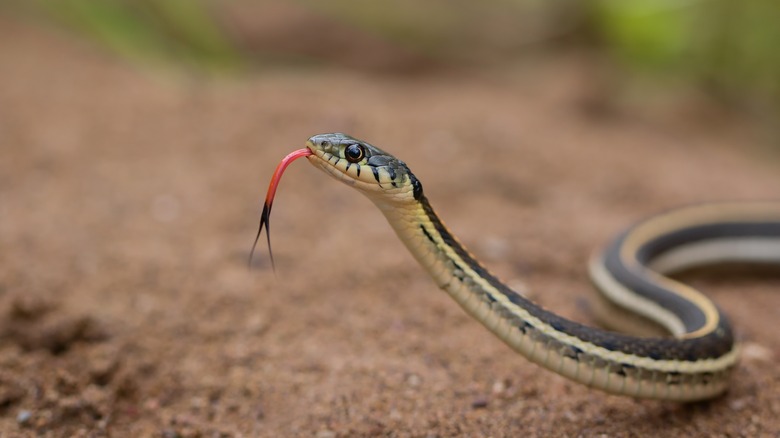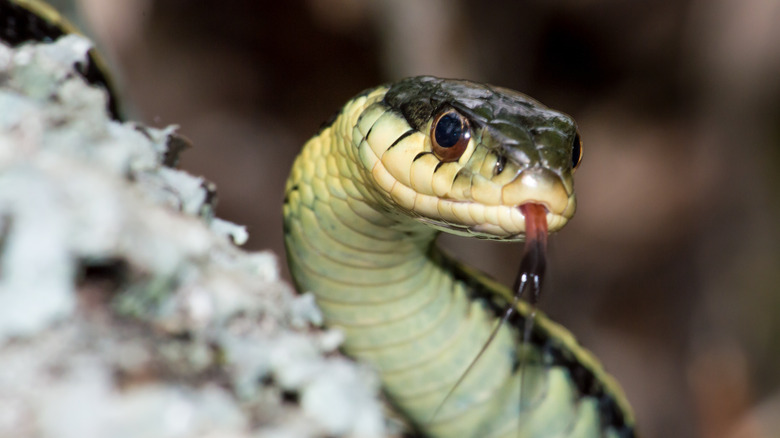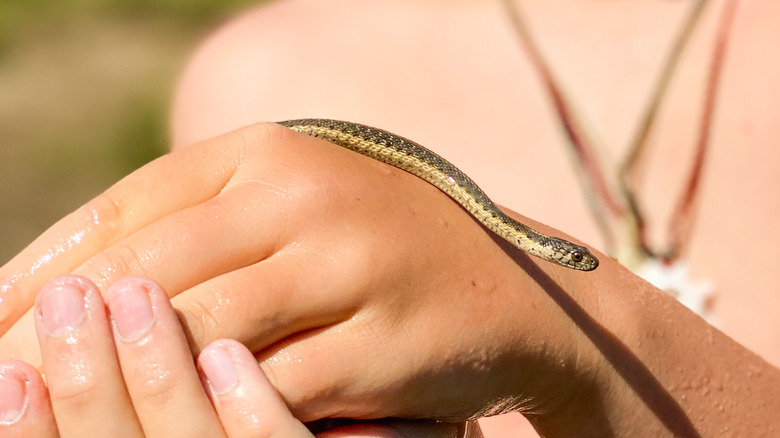What To Do If A Garden Snake Slithers Its Way Into Your Home
A 2016 study in Psychiatry Research found that roughly half of people feel anxious around snakes. If this describes you, you probably really hate seeing these creatures outside your home and are willing to use any trick to keep the snakes out of your garden. Should they manage to move into your home, though, the situation can become terrifying. Fortunately, garden (or garter) snakes are not poisonous. If you want to do the job yourself, you can pick up the creature by the tail or place it in a reptile-safe 5-gallon bucket before taking it far away from your home.
If you don't feel comfortable picking up the garden snake, you can try to trap it. Use a cardboard box or a bucket and place it over the top of the reptile. From here, put a covering overtop your container of choice — for this part, you might want help from someone comfortable handling snakes. Another option is to use a broom or another long-handled tool to move the reptile toward a door and outside. Be gentle with the animal, as you don't want to harm it.
Be careful when handling these snakes. Even though they don't have fangs, they do have small teeth and could bite you. These types of bites can lead to infection if you don't clean them properly afterward. Additionally, some people are allergic to the saliva of these reptiles.
Identifying garden snakes
Before attempting to remove a garden snake from your home, it's important to identify it accurately. Almost every state in America has one species of poisonous snake, and you don't want to inadvertently handle one of these dangerous creatures.
The garden snake appears in many different colors, which can complicate the process of identifying it. Regardless of the color, though, this species often will have three light-colored stripes that run down the entire length of its body — one of which is usually directly down the middle of the back. Just keep in mind that sometimes the stripes are not obvious. The chin and belly often have coloration similar to the stripes. If you can see the animal's tongue, you'll notice that it's mostly red with black tips. Typically, the garter snake has a head that's wider than its neck, and the top of the head is almost always dark-colored. These reptiles typically measure between 1 and 3 feet in length, although a few of them may approach 5 feet. Even very long garden snakes will remain slender and thin, though.
Another way to identify a garden snake is through the foul odor it emits when frightened. This is a defense mechanism for the animal. If you trap it indoors and it feels it's in danger, it may emit this odor, helping you identify it.
What if I don't feel comfortable handling it myself?
It's perfectly understandable if you don't have any interest in trying to grab the garden snake that's inside your home. Even though these animals are generally harmless, this might be one task you don't want to do on your own. Most local pest control experts will be willing to visit your home and remove the garter snake for you. Because this is not a dangerous animal, you'll pay less than if it was venomous. However, the cost to hire a professional pest control team to remove the reptile for you averages about $200. You might be able to lower the cost by reducing the amount of time that the expert spends in your home — try trapping the animal underneath a bucket, a box, or a plastic tote. Another option is to trap the animal in a room by placing towels underneath the door crack until help arrives.
While the pest control team is at your home, you may want to have an inspection of your entire property done to ensure you don't have more of these creatures in your home — or waiting to try to get inside. You can take preventative steps, too, like ensuring screens are tight and don't have holes and sealing gaps in your home's foundation. Remember: Skinny garden snakes can fit in narrow openings.


